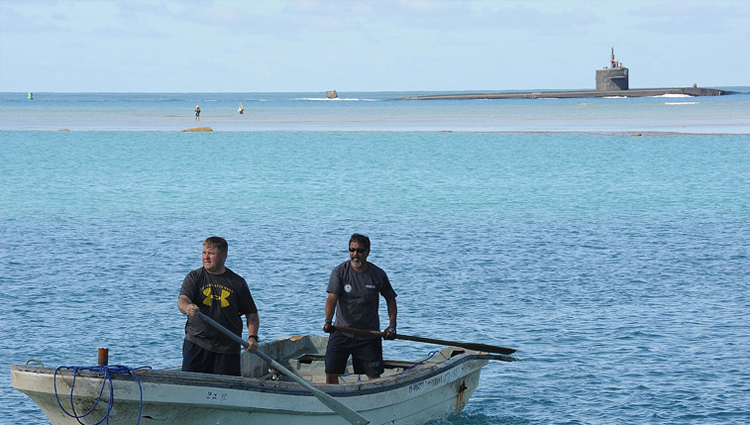First Morning Press Conference: March 2011 Japan Tsunami

Pearl Habor base personnel retrieve tsunami debris
The first press conference at the meeting covered research related to the March 2011 tsunami in Japan and throughout the Pacific. There were 4 participants: Satoko Oki from the Earthquake Research Institute at the University of Tokyo, Hermann Fritz from the Georgia Institute of Technology in Savannah, and Vasily Titov and Eddie Bernard from the NOAA Pacific Marine Laboratory in Seattle.
The conference covered a number of topics related to the tsunami, predicting its threat, and examining the public’s sense of tsunami risk.
Dr. Oki pointed out that survey results showed a large change in how people in Japan perceived the danger of a tsunami before and after this year’s disaster. Before the disaster, 70% of those surveyed thought that a 3 meter tsunami was dangerous. After the disaster, 40% of those who were asked said that the same height was dangerous. Oki pointed out that it might be helpful to the public to always pair predicted tsunami heights with the rule that a 2 meter tsunami can wash away a house.
Dr. Fritz reconstructed the flooding using LIDAR and amateur video of the disaster. He showed that the water flowed out of one harbor area at substantial 11 meters/second, which he said is greater than what many boats can endure. That’s a speed of about 23 mph.
Dr. Titov showed videos of the horrible flooding and discussed his efforts to use computer modeling in the development of real time forecasts of tsunami flooding.
Dr. Bernard works with Dr. Titov and further discussed these efforts. As part of an international effort, they had 4 buoys and seafloor anchors located relatively close to the tsunami’s source, which meant that within 30 minutes they knew that this tsunami was going to be gigantic. The fascinating part of the modeling was how it could show how the tsunami interacted with the height and shape of features underwater. This allowed them predict how the waves were “banged around,” he said. He indicated that based on how the system predicted flooding from Japan to Hawaii, to the Pacific Northwest, that they are confident of their ability to forecast flooding to within 70-80%.

